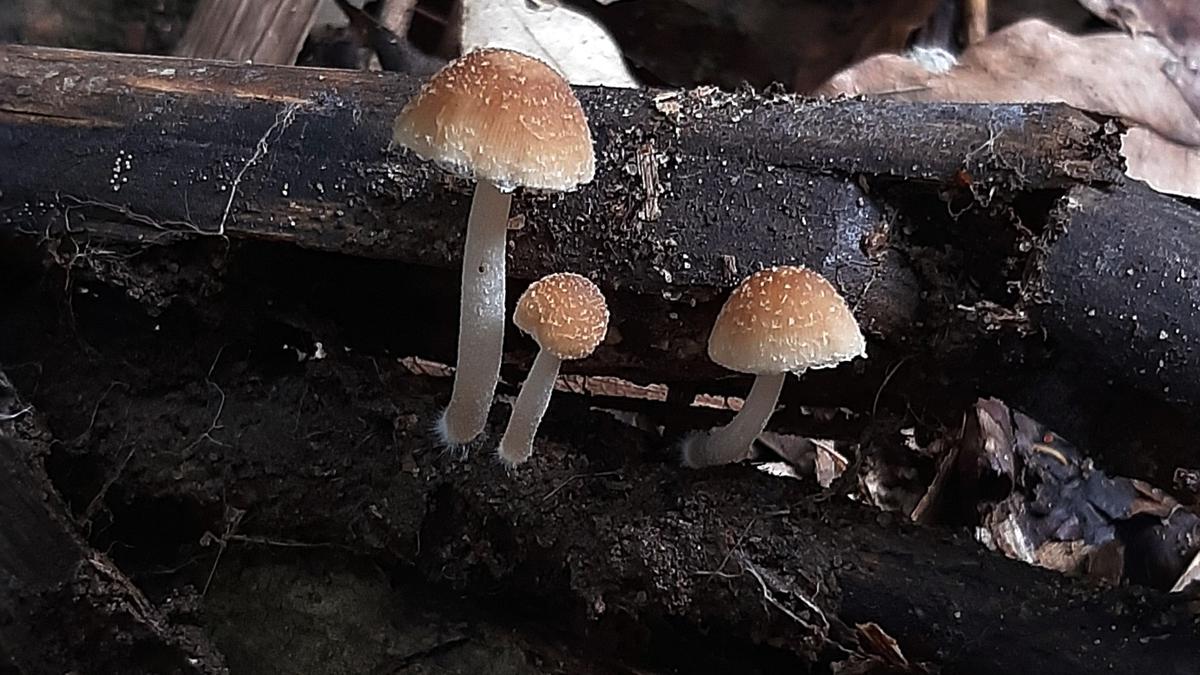Researchers at the Jawaharlal Nehru Tropical Botanic Garden and Research Institute (JNTBGRI) in Kerala, India, have identified a new species of mushroom, named Candolleomyces albosquamosus, found on the JNTBGRI campus in the Western Ghats. This discovery sheds light on the region’s remarkable biodiversity and encourages further exploration of fungal diversity in the area.
Key Details
Genus Identification
-
- The new species belongs to the genus Candolleomyces, a small genus with only 35 recognized species globally.
- The discovery was published in the scientific journal Phytotaxa by researchers C. K. Pradeep and P. K. Nayana from JNTBGRI’s Microbiology Division.
Distinct Features
-
- Candolleomyces albosquamosus is characterized by its delicate appearance and honey-yellow cap.
- The mushroom has a bell-shaped cap with white woolly scale-like structures, giving it a unique appearance.
- Mature specimens have a cap diameter ranging from 12 mm to 38.5 mm, and a height of approximately 58 mm.
Habitat and Morphological Studies
-
- Specimens were collected from the natural forests on the JNTBGRI campus, particularly from dead logs and bamboo culms.
- Detailed morphological and molecular studies confirmed the classification of these specimens as an undescribed species of Candolleomyces.
Ecological Significance
-
- Mushrooms like Candolleomyces albosquamosus play a crucial role in decomposing plant litter in tropical forests, contributing to the ecosystem’s nutrient cycling.
- The discovery highlights the ecological importance of secondary saprophytic fungi in the forest ecosystem.
Biodiversity in Western Ghats
-
- The Western Ghats region in Kerala is known for its rich fungal diversity, with many species being endemic to the area.
- This discovery emphasizes the need for continued exploration and study of the Western Ghats’ diverse flora and fauna.




 ISRO Launches RESPOND Basket 2025, Calls...
ISRO Launches RESPOND Basket 2025, Calls...
 LVM3-M6 Rocket Set to Launch on December...
LVM3-M6 Rocket Set to Launch on December...
 Michaela Benthaus to Make History as Fir...
Michaela Benthaus to Make History as Fir...







